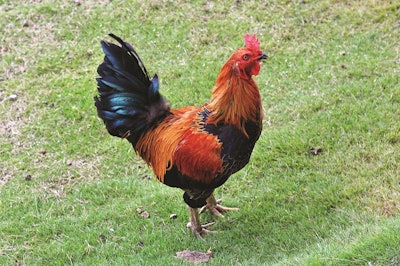
Chicken production in the Philippines is expected to recover this year after emerging from the difficulties of COVID-19. The economy is forecast to expand strongly, however, as the year started, the country's broilers producers were suffering.
According to the U.S. Department of Agriculture Foreign Agriculture Service (FAS), quoting the Philippines Statistics Authority, production declined by 6% during the first half of the year.
However, the country’s Department of Agriculture notes that output in the industry turned positive during the second quarter. In the face of weak demand, producers continued to face low prices into the start of 2022.
As in many other markets around the world, this downturn in demand was primarily due to the loss of food service, with restaurants being closed or offering only an extremely limited service.
ASF benefitting chicken consumption
Of benefit to chicken producers, however, there have been recent outbreaks of African swine fever (ASF). Difficulties in the swine sector have led to consumers substituting pork with chicken and this, combined with the re-opening of catering establishments, is expected to lead to poultry production and consumption increasing in 2022.
FAS estimated, prior to the emergence of Omicron, that chicken meat output would rise by 2% this year to reach 1.36 million tons. Imports, although higher than pre-pandemic levels, will drop by 5% in 2022 to stand at 400,000 metric tons.
Bump in the road
Chicken meat consumption in the country recorded steady growth between 2013 and 2019, becoming the country’s second most consumed meat behind fish, but ahead of pork. 2021 saw total consumption decline, however, 2022 is expected to see the absolute amount of chicken meat consumed rise. Per capita consumption will fall to 15.6 kg, from 15.8 kg last year, due to consumption not keeping pace with population growth.
Government help?
Poultry is one of the beneficiaries of the country’s National Livestock Program, with support being made available to families to replenish stocks lost to avian influenza or facing losses due to COVID-19. However, as 2021 drew to a close, the country’s broiler association warned that its members may have to cut back production due to low demand, high input prices and strong competition from imports. The warning explained that without more government action, small producers may be forced to exit the industry.
Figures released in late 2021 by the country’s statistics authority show that the country’s chicken flock was larger than 12 months earlier, suggesting that until demand increases, or imports are curbed, prices will remain low.
Native breeds remain popular
Figures for the third quarter of 2021 reveal that the Philippines was home to 190.74 million chickens, an increase of 2.4% in comparison with the same period in 2020. Native or improved birds accounted for 42.9% of this total, broilers for 34% and layers made up the remainder.
The number of native birds as a share of the total declined over the period, while broilers grew by 5.5% and layers by 6.3%. The duck population was estimated at 9.08 million head.
Philippine pig, poultry sectors maintain growth in 2016
















